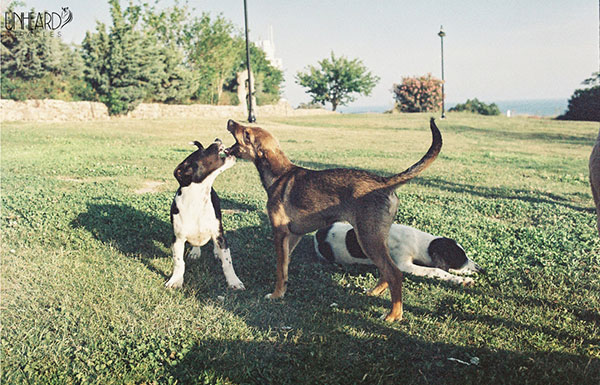Dogs are known for their loyalty and affection, and most dog owners cherish the bond they share with their pets. However, when a dog begins to show signs of aggression, such as growling, snapping, or lunging, it can leave you feeling anxious and unsure of what to do next. It’s difficult to see your beloved companion act this way, but there is hope. With aggressive dog training, you can guide your dog toward better behavior, helping to restore peace and trust at home.
Aggression in dogs often stems from underlying issues such as fear, anxiety, or past trauma. These behaviors can disrupt not only your dog’s happiness but also the well-being of your entire family. By understanding the root causes and using the right training methods, you can help your dog feel more secure. This guide will explore effective, aggressive dog training techniques that can transform even the most troubled canine into a calm and loving companion.
Understanding Types of Dog Aggression
- Fear Aggression: Scared dogs may growl, snap, or bite when they feel threatened.
- Territorial Aggression: This occurs when a dog feels the need to protect its space or owner from perceived intruders.
- Social Aggression: This may occur when a dog attempts to assert dominance over another dog or person.
- Predatory Aggression: This type of aggression can be particularly dangerous, as the dog may view smaller animals or children as prey to chase or capture.
Recognizing the type of aggression your dog is displaying can help guide the training process more effectively.
Common Behaviors Seen in Aggressive Dogs
Aggressive dogs often display warning signs before their behavior escalates. Recognizing these behaviors can help prevent dangerous situations:
- Growling and Snarling: These sounds indicate that a dog is uncomfortable or scared.
- Biting: Dogs may bite out of fear, pain, or a desire to assert dominance. This is a serious issue.
- Lunging: A dog may suddenly lunge at other dogs, animals, or people.
Territorial Marking: Dogs may growl or bark to warn others to stay away from their space.
If you observe these behaviors, it’s important to act quickly and implement appropriate aggressive dog training techniques.
Root Causes of Aggression
- Lack of Socialization: Dogs that haven’t been exposed to a variety of people, animals, or environments may feel scared or unsure, leading to aggression.
- Past Trauma: Dogs that have been abused or neglected are more likely to exhibit fear-based aggression.
- Health Issues: A sudden change in behavior may indicate pain or illness, particularly in older dogs. If your dog becomes aggressive suddenly, it’s important to consult a veterinarian.
- Improper Training Methods: Punishment-based training can exacerbate fear and aggression in dogs.
Techniques to Socialize Aggressive Dogs
Socialization is a key component of retraining an aggressive dog. The following techniques can help your dog feel more comfortable and safe in various situations:
- Habituation: Gradually expose your dog to the stimuli that cause them fear. For example, if your dog is afraid of other dogs, start by introducing them to calm dogs from a distance and slowly reduce the distance over time.
- Positive Reinforcement: Reward calm, positive behavior with treats or praise. This builds trust and reinforces desired behaviors.
- Counterconditioning: Replace negative reactions with positive experiences. For instance, if your dog growls at strangers, offer a treat each time a stranger approaches, teaching your dog to associate strangers with positive outcomes.
- Obedience Classes: Enrolling your dog in obedience classes can be transformative. Professional trainers reinforce positive behaviors while providing you with tools to manage your dog’s aggression.
How to Train an Aggressive Puppy: Practical Tips
Training an aggressive dog requires time, patience, and consistency. Here are some key tips to help guide you:
- Start Early: The sooner you begin training your dog, the easier it will be to correct bad behavior. Puppies benefit from early socialization and learning basic commands, which can prevent aggressive behavior later in life.
- Be Consistent: Consistency is crucial. Ensure that everyone in your household follows the same rules and reward system. Dogs thrive on routine, so maintaining a regular training schedule is important.
- Seek Professional Help: If your dog’s aggression feels overwhelming, don’t hesitate to seek help from a professional. A behaviorist or dog aggression specialist can provide specific guidance based on your dog’s triggers.
What Not to Do With an Aggressive Dog
When dealing with aggression, it’s important to avoid certain actions:
- Don’t Punish: Punishing your dog for aggressive behavior usually worsens the issue, as it can make them more fearful or defensive. Focus on rewarding good behavior instead.
- Don’t Isolate: It may be tempting to isolate an aggressive dog from others, but this can increase anxiety and aggression.
- Don’t Force Exposure: Forcing your dog to confront their triggers too quickly can backfire and worsen the situation.
- Don’t Ignore Health Problems: If your dog displays sudden aggression, take them to the vet immediately to rule out any health issues.
Conclusion
Training an aggressive dog isn’t easy, but with love, patience, and the right techniques, you can help them become the friendly companion you desire. Consistency is key, and seeking guidance from experts in aggressive dog training can support you throughout the journey.
